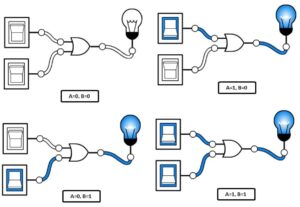Introduction:
As the integration of artificial intelligence (AI) capabilities with rapid advancements in semiconductor technology heralds a transformative era in computing, students aspiring to lead innovation must prioritize delving into key areas that will shape the future of hardware AI. This article explores five crucial topics that students should prioritize to prepare themselves for the exciting journey ahead in AI Chips.
Follow us on Linkedin for everything around Semiconductors & AI
5 Topics to Dominate in the Age of AI Chips to Future-Proof Your Career
1. Neuromorphic Computing:
Neuromorphic computing, inspired by the intricate architecture of the human brain, holds immense promise for revolutionizing AI chips applications. Exploring neuromorphic engineering allows students to contribute to the development of chips capable of learning, adapting, and performing complex tasks with unprecedented speed and efficiency, emphasizing the importance of understanding the principles of neural networks and machine learning algorithms for designing such chips.
Example:
IBM’s TrueNorth Chip – TrueNorth is a neuromorphic chip developed by IBM that mimics the parallelism and energy efficiency of the human brain. It consists of over 5 billion transistors and is designed for tasks such as sensory processing and pattern recognition. TrueNorth demonstrates the potential of neuromorphic computing in enabling efficient and scalable AI applications.
2. Advanced Semiconductor Materials:
The relentless pursuit of Moore’s Law has fueled the exponential growth of computing power over the years. However, as we approach the physical limits of traditional semiconductor technology, exploring alternative materials and transistor structures becomes imperative. Gallium Nitride (GaN) and nanowire FETs are among the emerging materials and structures that promise to push the boundaries of chip performance. Students delving into this field can spearhead innovations that sustain the momentum of technological advancement beyond Moore’s Law.
Example:
Gallium Nitride (GaN) – GaN is an advanced semiconductor material that offers superior power efficiency and performance compared to conventional silicon. Various applications such as power electronics, RF amplifiers, and LED lighting utilize GaN-based power devices. Companies like Cree, Infineon, and GaN Systems are at the forefront of GaN technology development.
3. Hardware-Software Co-design:
In the era of hardware AI chips, the synergy between hardware and software becomes paramount. Traditionally, hardware and software were developed in isolation, but co-design methodologies are now essential for optimizing system performance. Proficient students in computer architecture, compiler design, and machine learning frameworks can bridge the gap between hardware and software, unlocking new possibilities for efficient and scalable AI implementations.
Example:
Google’s Tensor Processing Unit (TPU) – Google’s TPU is a custom-designed hardware accelerator optimized for machine learning workloads. It is tightly integrated with Google’s TensorFlow framework, allowing seamless execution of AI algorithms with high efficiency and scalability. TPU accelerates tasks such as deep learning inference and training, enabling rapid advancements in AI research and applications.
4. Explainable AI (XAI):
As AI systems become increasingly integrated into hardware, ensuring transparency and accountability are critical. Students exploring XAI contribute to fostering trust and reliability in hardware-based AI systems by empowering us to interpret AI decisions and mitigate potential biases. They play a crucial role in developing ethical and responsible AI technologies, paving the way for their widespread adoption across various domains.
Example:
LIME (Local Interpretable Model-agnostic Explanations) – LIME is a technique for explaining the predictions made by machine learning models. It provides interpretable explanations by highlighting the features that contribute most to individual predictions. LIME enhances the transparency and trustworthiness of AI systems by enabling users to understand the rationale behind model decisions, even for complex black-box models.
5. Security in Hardware AI:
With the integration of AI into hardware, new security challenges emerge. To safeguard the integrity and confidentiality of AI systems, students must comprehend hardware security principles like secure boot and memory encryption. By addressing security vulnerabilities proactively, students play a pivotal role in fortifying hardware AI against potential threats and vulnerabilities.
Example:
Intel’s Software Guard Extensions (SGX) – SGX is a security feature available in Intel processors that provides a secure enclave for executing sensitive computations. It protects AI algorithms and data from unauthorized access and tampering by isolating them within a protected environment. SGX ensures the confidentiality and integrity of AI systems, even in the presence of malicious attacks or compromised hardware.
Conclusion:
The convergence of semiconductor technology and artificial intelligence heralds a new era of innovation and possibility. Students can equip themselves with the knowledge and skills necessary to shape the future of hardware AI by immersing themselves in key areas such as neuromorphic computing, advanced semiconductor materials, hardware-software co-design, explainable AI, and hardware security.








